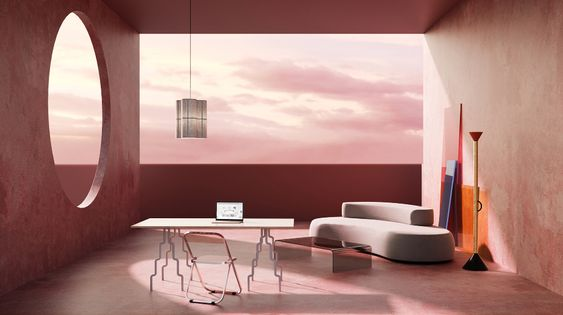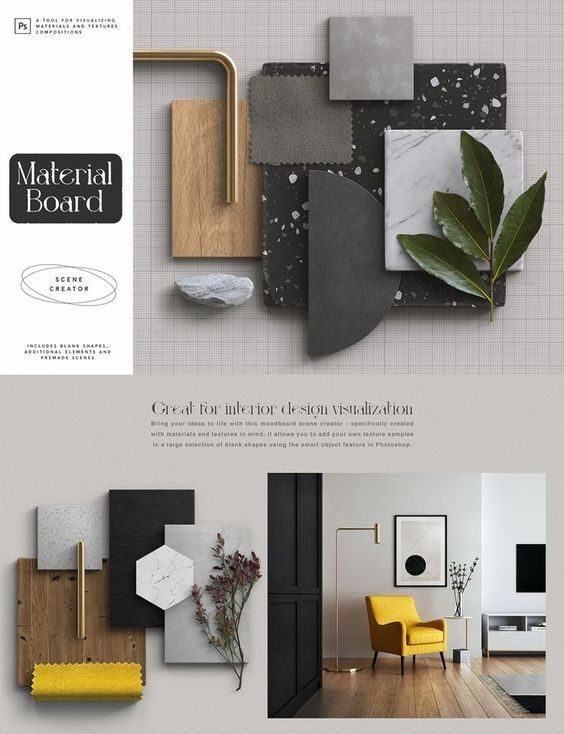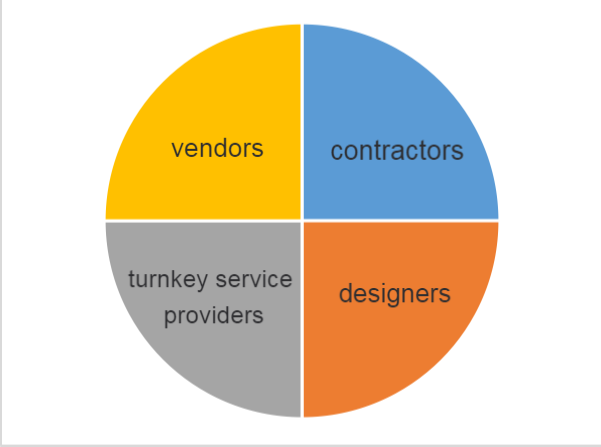The Ultimate Guide to Residential Interior Design Costs: How to Budget, Plan, and Transform Your Home Smartly
- Pescora Design

- Nov 17, 2023
- 10 min read
When it comes to interior design, the big question most homeowners ask is: "How much will it cost to design my home?"
It’s a valid concern and a critical one. Designing your home isn’t just about selecting colors and furniture. It’s about transforming a space into a reflection of your personality, lifestyle, and aspirations. But this transformation comes at a cost, and that cost can vary wildly depending on a wide range of factors. Let’s explore what really determines the cost of interior designing a home, step by step.
Glossary:

Factors That Determine Your Overall Residential Interior Design Cost
The cost of residential interior design isn’t a one-size-fits-all figure. It’s a carefully layered structure influenced by multiple variables each with the power to increase or decrease your overall budget.
Whether you’re working on a compact 1BHK or designing an expansive 4BHK or villa, the following core factors remain consistent and form the blueprint for every interior design estimate.
Design Composition
Elements in the Room
Material Quality
Vendor Segmentation
Design Composition
When planning your home interiors, one of the first and most important decisions you'll make is around design composition the overall style, layout, and complexity of your design vision. This isn’t just a visual decision; it has a direct impact on your project cost.
Why Composition Matters

The composition of your design refers to how different elements like layout, textures, lighting, materials, and furnishings come together to form a cohesive look.
A minimal, clean layout may be simple and cost-effective, while a rich, layered design with custom features naturally demands more time, skilled labor, and premium materials, leading to a higher overall cost.
The more complex and detailed the design, the greater the budget you'll need to allocate. Think custom wall treatments, intricate false ceilings, concealed storage, or bespoke cabinetry these enhancements elevate the aesthetic but also increase the investment.
Choosing a Style That Fits Your Budget
Your interior design style plays a huge role in shaping your cost structure. Some styles are inherently more resource-intensive than others. That doesn’t mean you need to compromise on your aesthetic instead, it’s about understanding which styles align with your budget, and how to smartly blend elements to get the look you want.
Here’s a general breakdown of popular interior styles by budget range:
Interior Design Style | Budget Range |
Bohemian | Mid to High |
Industrial | Mid to High |
Coastal | Low to Mid |
Scandinavian | Low to Mid |
Contemporary | Mid to High |
Mid-Century Modern | Mid to High |
Traditional | Mid to High |
Art Deco | High |
Not sure which design style fits your personality (and your budget)? Contact Us.
Smart Styling Tip:
Many successful projects strike the perfect balance by blending mid-range and high-end elements—for example, using luxurious lighting in a minimalist layout or combining budget-friendly finishes with one statement piece per room. This way, you get the style you love without exceeding your financial limits.

Number of Elements in the Room
When it comes to residential interior design, it’s not just the style you choose that affects your budget, it’s the number of elements you include in each space. From essentials like furniture and closets to aesthetic features like false ceilings and designer wall panels, each item adds complexity, effort, and cost to your project.
Understanding what counts as a “design element” and learning how to make smart choices room by room can help you manage your budget without compromising on design quality.
What Is Included As Interior Design Elements?
Furniture: Beds, sofas, chairs, coffee tables, side tables, dining sets, etc.
False Ceilings: Cove lights, layered ceilings, gypsum designs, recessed lighting.
Custom Cabinetry: Made-to-fit wardrobes, kitchen cabinets, vanity units, bar counters.
Types of Closets: Hinged, sliding, walk-in, or modular wardrobe systems.
Fixtures & Fittings: Lighting fixtures, curtain rods, sanitary fittings, handles.
Entertainment Units: TV walls, floating shelves, integrated speaker panels.
Architectural Details: Cornices, columns, trims, wooden paneling, arches.
Wall Treatments: Textured paint, wallpaper, wall mouldings, cladding.
Each of these components involves separate design decisions, materials, manufacturing processes, and labor. Naturally, the more elements you introduce, the higher the overall cost of your project.
How More Elements Affect the Cost
Labor Costs go up as more skilled work is required for installation.
Material Costs increase with every added component.
Timeframes extend, which may lead to increased project management or contractor fees.
Complexity in Execution can result in higher chances of revisions or coordination efforts.
Even small additions like accent lighting or niche wall shelves add to the logistics and price. That’s why minimalist spaces tend to be budget-friendly, while ornate or layered designs fall on the higher end of the spectrum.
Finding the Right Balance
You don’t have to strip down your vision to stay on budget. The secret lies in smart balancing:
Mix premium, custom-built pieces with ready-made options.
Invest more in your living room but use simple elements in the bedrooms.
Add a feature wall in your living room or dining space but keep bedroom walls plain with subtle tones.
Every Room Has Different Needs
The number of elements required depends on how the space is used:
Living Room: May require seating, media units, ceiling work, and decorative lighting.
Bedroom: Typically includes a bed, storage, wardrobes, and possibly a vanity or study nook.
Kitchen: Needs high-functionality cabinetry, countertops, and durable finishes.
Guest Room: Can be simplified with just basic furniture and wardrobe space.
Bathroom: Involves tiling, cabinetry, fittings, and sometimes ceiling work.
EXPERTS TIP: "Instead of applying the same design intensity across your home, prioritize rooms that require functionality and visibility, and tone down others to optimize your budget."
Budget-Saving Alternatives
Here are a few tried-and-tested ways to bring costs down without compromising on style:
Use modular or loose furniture instead of getting everything custom-built.
Opt for laminate finishes over premium veneers or acrylics.
Stick to high-quality paint rather than expensive wallpapers or panels.
Choose open shelves over bulky storage cabinets.
Material Selection

One of the most influential elements in determining the overall cost of a residential interior design project is the quality and type of materials used. From surface finishes and flooring to cabinetry and countertops, every material decision plays a key role in shaping both the visual appeal and budget allocation of your home design.
Choosing the right materials is not only a question of aesthetics—it is also a matter of durability, functionality, and long-term maintenance. A well-informed choice can help you achieve a premium look within a practical budget, while a poorly planned selection can result in frequent replacements or disappointing performance over time.
How Material Quality Impacts Cost
The cost of materials varies significantly based on factors such as:
Brand reputation
Finish quality
Material origin (local vs. imported)
Installation complexity
Durability and maintenance requirements
Premium materials such as imported marbles, high-gloss acrylics, or natural wood veneers—offer luxury appeal and longer lifespan, but they also come with a higher price tag. On the other hand, budget-friendly alternatives—like pre-laminated boards, engineered stone, or vinyl flooring—may not have the same finish or durability, but they are excellent for maintaining costs within limits.
Budget Ranges by Material Type
To understand how material choices can impact your project financially, consider the cost tiers for common interior elements:
Countertops
High-End: Carrara Marble – Known for its natural veining and premium aesthetic, this imported stone is ideal for upscale kitchens and bathrooms.
Mid-Range: Nero Marquina Marble – A popular alternative offering durability and rich color at a slightly lower cost.
Budget-Friendly: Engineered Quartz or Green Onyx – Cost-effective and available in a wide range of colors, these materials balance performance with aesthetics.
Cabinet Finishes
High-End: PU Polish, Natural Veneers, or Acrylic Gloss – Provide a luxurious finish with superior wear resistance.
Mid-Range: Laminates in matte, suede, or textured finishes – A practical choice for modern homes, offering a variety of design options.
Budget-Friendly: Membrane finish or pre-laminated particle boards – Ideal for rental units or budget-sensitive projects.
Wall Treatments
High-End: Imported wallpapers, wooden panelling, or fluted MDF designs – Often used as feature walls in living rooms or bedrooms.
Mid-Range: Designer paints, stencil art, or branded wall textures – Customizable and affordable for large surface areas.
Budget-Friendly: Simple emulsion paint or DIY accents – A cost-efficient solution for giving walls a fresh look.
Flooring
High-End: Hardwood, Italian Marble, or large-format vitrified tiles – Offer timeless beauty and high durability.
Mid-Range: Double-charged vitrified tiles or porcelain tiles – Suitable for most homes with long-lasting results.
Budget-Friendly: Vinyl flooring or basic ceramic tiles – Economical and relatively easy to install and maintain.

Strategic Material Mixing For Achieving Balance
A smart design approach doesn't require choosing either luxury or budget—it allows for intentional mixing of both. For example:
Use high-end materials in visible or high-impact areas like kitchen islands, living room accent walls, or master bedroom wardrobes.
Opt for mid- to low-range materials in functional or concealed spaces like utility rooms, inner cabinetry, or children’s bedrooms.
Select premium finishes from economical brands to maintain consistency in design while optimizing cost.
Considerations Beyond Aesthetics
While visual appeal is important, your material choices should also reflect the functional needs of your home. For instance:
Kitchens and bathrooms require materials that are moisture-resistant and easy to clean.
Family rooms and children's bedrooms benefit from surfaces that are scratch-resistant and low-maintenance.
High-traffic areas like entrances or staircases need durable flooring options that can withstand regular wear.

Vendor Segmentation
When it comes to residential interior design, the professionals you choose to work with can significantly influence both the cost and the outcome of your project. From freelance designers to turnkey service providers, the market offers a range of options to suit different needs and budgets. Understanding how vendor segmentation works can help you make strategic decisions that align with your aesthetic goals, timeline, and financial plan.
Understanding the Key Segments
Here’s a breakdown of the different categories of service providers in the interior design ecosystem:
1. Independent Interior Designers
These are freelance or boutique designers who usually take on a limited number of projects to maintain a high degree of customization and client interaction. They may charge:
Per square foot
Hourly consulting fees
Lump-sum project rates
Their pricing often reflects their design philosophy, market reputation, and portfolio strength. While they bring personalized attention and creative flair, the costs can vary widely based on experience and location.
2. Design Studios & Firms
These are small to mid-sized teams that offer more structured design services. They often provide:
Design conceptualization
3D visualizations
Material selection
On-site supervision
They typically have standardized pricing modules, but also offer some room for customization. Their overheads and employee costs may reflect in slightly higher pricing compared to solo designers.
3. Turnkey Service Providers
Turnkey providers offer end-to-end interior solutions, from design ideation to execution. This includes everything from civil work, carpentry, electrical, and painting to final styling. This model is ideal for clients looking for a hassle-free, time-bound, and professionally managed approach to home interiors. Providers like Pescora Designs categorize their services into:
Premium modules: High-end materials, designer inputs, and customization
Economical modules: Cost-effective materials, essential design support, value-engineered solutions
Hybrid options: A curated blend of both to maintain design intent while managing costs
4. Contractors & Local Vendors
These professionals focus more on execution than design. While they may not provide conceptual layouts or 3D renders, they excel in labor-intensive tasks like:
Modular installation
False ceiling work
Painting and carpentry
Working with local contractors is a cost-effective solution if you already have a design in hand, but it requires more project management from your end.
5. Celebrity or High-End Designers
Some homeowners prefer to work with elite designers who are known for creating iconic spaces. These professionals usually work with:
A limited client base
Signature styles
Premium-only materials and finishes
Their fees are often significantly higher and may involve minimum budget thresholds, but they bring unmatched industry insights, trend leadership, and bespoke luxury.
Factors That Influence Vendor Pricing
The cost structure across vendors can vary based on:
Location: Metro cities typically have higher design and labor charges.
Experience & Credentials: Designers with formal education and a strong portfolio command premium pricing.
Scope of Work: Full-home design will cost more than single-room or partial service assignments.
Service Inclusions: Does the pricing include site visits, revisions, material procurement, and post-completion support?
Making the Right Choice for Your Home
Choosing the right vendor depends on several key considerations:
Your project size: A 1BHK makeover may not need a full-service design studio, but a 4BHK villa might.
Your timeline: Turnkey providers are often faster, with structured timelines and project managers.
Your budget: Hybrid service modules allow you to get design expertise at affordable rates.
Your involvement: Some homeowners prefer to be involved in every detail, while others want a stress-free, delegated experience.
If you’re unsure which segment to choose, Pescora Designs offers consultation services to help you evaluate what type of service provider best suits your project goals.
FAQs:
What factors influence the cost of residential interior design?
Factors such as the size of the space, complexity of the design, choice of materials, location, and level of customization can all affect the overall cost.
How can I estimate my interior design budget effectively?
Are there any hidden costs in a residential interior design project?
Is it possible to achieve a high-end look on a limited budget?
How do I choose between different interior design packages or services?
What should I expect in terms of the timeline for a residential interior design project?
Can I save money by sourcing materials and furniture myself?



Comments